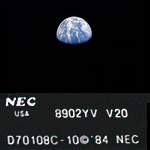Hi all,
after 14 hours work
I succeed to build a generic XP SP3, updated with what I can get,
which runs on nearly every compi without any BIOS support for nvme.
It is absolut stable.
For to test this, I run defrag on nvme disk, prime95, 3Dmark, chkdsk on nvme disk,
firefox, youtube videos, connect USB stick.
For this to get, you need to be very careful with Tutorial 7.
The result is amazing.
In Tutorial 7 I changed in menu.lst
root (hd0,0) against rootnoverify (hd0,0)
Oh, this was the reason for soso many blue screens 10 years ago,
because error rootnotverify (hd0,0).
Xp SP3 with Tutorial 7 on Asus z87-pro (zero nvme in BIOS) motherboard, Samsung 960 pro nvme disk, Fat32 c
no other device connected.
-----------------------------------------------------------------------
CrystalDiskMark 5.1.2 © 2007-2016 hiyohiyo
Crystal Dew World : http://crystalmark.info/
-----------------------------------------------------------------------
* MB/s = 1,000,000 bytes/s [SATA/600 = 600,000,000 bytes/s]
* KB = 1000 bytes, KiB = 1024 bytes
Sequential Read (Q= 32,T= 1) : 2658.701 MB/s
Sequential Write (Q= 32,T= 1) : 1901.398 MB/s
Random Read 4KiB (Q= 32,T= 1) : 530.866 MB/s [129606.0 IOPS]
Random Write 4KiB (Q= 32,T= 1) : 340.442 MB/s [ 83115.7 IOPS]
Sequential Read (T= 1) : 2035.464 MB/s
Sequential Write (T= 1) : 1802.148 MB/s
Random Read 4KiB (Q= 1,T= 1) : 58.420 MB/s [ 14262.7 IOPS]
Random Write 4KiB (Q= 1,T= 1) : 251.018 MB/s [ 61283.7 IOPS]
Test : 1024 MiB [C: 44.5% (7.1/15.9 GiB)] (x5) [Interval=5 sec]
Date : 2018/07/29 0:52:25
OS : Windows XP Professional SP3 [5.1 Build 2600] (x86)
This looks like magic ![]()
Dietmar












